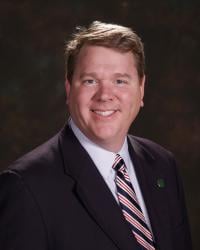Today, nearly every hospital in the United States pays an anesthesia subsidy and this trend eventually impacts outpatient centers. This rapidly growing disruption in the anesthesia market should motivate healthcare systems to explore more efficient and effective models to mitigate expenses.
Some policies reduce Certified Registered Nurse Anesthetists (CRNAs) reimbursement compared to the Physician Fee Schedule when providing services outside the restrictive Medical Direction billing model. For example, in a recent announcement, Cigna Healthcare informed anesthesia providers of their intent to pursue a 15 percent reduction. Cigna reimbursement will only be at the 100% level if the most inefficient model of anesthesia staffing for hospital and health systems is utilized, which is the traditional 1:4 Medical Direction model.1
These types of policies penalize hospitals that choose to implement more efficient staffing models by shifting the anesthesia costs onto hospitals in the form of subsidies. The Medical Direction model also brings compliance risk as the physician anesthesiologist must comply with the Tax Equity and Fiscal Responsibility Act (TEFRA) requirements for billing which are almost statistically impossible to achieve.2
In contrast, when evaluating anesthesia services using Efficiency-driven Anesthesia Modeling, administrators are encouraged to consider anesthesia staffing models that are not based simply on the billing model of Medical Direction, which limits physician and CRNA ratios up to 1:4, without any demonstrated increase in quality or patient access.3 A decision-making framework based on the science of public policy, the Efficiency-driven Anesthesia Modeling identifies the most appropriate anesthesia care delivery system for a location. This makes the most of a facility’s resources by positioning efficient anesthesia provider staffing as a central objective.
Hospitals across the country are beginning to realize there are other models that offer the same level of quality, improved staffing, improved patient access to anesthesia care, and decreased overall costs and subsidies, with less risk of Medicare fraud.4 One of these models is the Collaboration/Team model, where physician anesthesiologists and CRNAs work collaboratively in ratios supported by the local patient population and acuity. The other model is a physician anesthesiologist or CRNA operating independently.
CRNAs personally administer more than 50 million anesthetics to patients each year in the United States and are involved in every aspect of anesthesia in all types of settings. In many states CRNAs are the sole anesthesia providers in nearly 100 percent of rural hospitals, affording these medical facilities obstetrical, surgical, trauma stabilization, and pain management capabilities.
Payment cuts to CRNAs working outside the narrow Medical Direction billing model directly shift the payment reduction amount to any facility that will have to pay a subsidy and risk adding a subsidy to previously subsidy-free healthcare facilities. Facilities that cannot afford the subsidy may pass the extra cost directly to the patient. Even when not passed to the patient, but absorbed by a hospital, it can impact the hospital’s ability to fund patient quality enhancements and other modernizations.
Policies of unequal payment rates encourage higher-cost healthcare delivery without improving quality and impede access to care. Essentially, these types of payment cuts penalize facilities that seek a more efficient anesthesia model or facilities that simply cannot afford physician anesthesiologists in strict ratios of 1:4, or afford them at all, as we see in much of the rural United States and many outpatient facilities.5 Health systems, providers, and patients all lose with this proposed payment cut.
If these types of policies are implemented, hospital subsidies will continue to rise, impacting the consumer. They will only serve to benefit the insurance companies through profits. Hospital executives must stand up against arbitrary payment cuts like this one, that shift costs by increasing hospital subsidies for anesthesia services.
1. Cintina I, Hogan P, Schroeder C, Simonson B, Quraishi J. Cost Effectiveness of Anesthesia Providers and Implications of Scope of Practice in a Medicare Population. Nursing Economic$. 2018;36(2):67-73.
2. Epstein RH, Dexter F. Influence of supervision ratios by anesthesiologists on first-case starts and critical portions of anesthetics. Anesthesiology. 2012 Mar;116(3):683-91. doi: 10.1097/ALN.0b013e318246ec24. PMID: 22297567.
3. Dulisse B, Cromwell J. No harm found when nurse anesthetists work without supervision by physicians. Health Aff (Millwood). 2010;29(8):1469-1475. doi:10.1377/hlthaff.2008.0966
4. (https://www.aana.com/docs/default-source/aana-journal-web-documents-1/legal-briefs-0214-p10-12.pdf?sfvrsn=d23d55b1_4).
5. Martsolf GR, Baird M, Cohen CC, Koirala N. Relationship Between State Policy and Anesthesia Provider Supply in Rural Communities. Med Care. 2019;57(5):341-347. doi:10.1097/MLR.0000000000001106

Chris Hulin, DNP, MS, MBA, CRNA
Hulin is the president of the Middle Tennessee School of Anesthesia (MTSA) and a fellow of the American Association of Nurse Anesthesiology (AANA). As a leader in education at the MTSA, he has created a fertile environment dedicated to the advancement of nurse anesthesia education and practice. He has addressed the U.S. Food and Drug Administration (FDA) on behalf of AANA on issues related to the opioid epidemic and served on National Advisory Council for Nurse Education and Practice representing the CRNA profession.